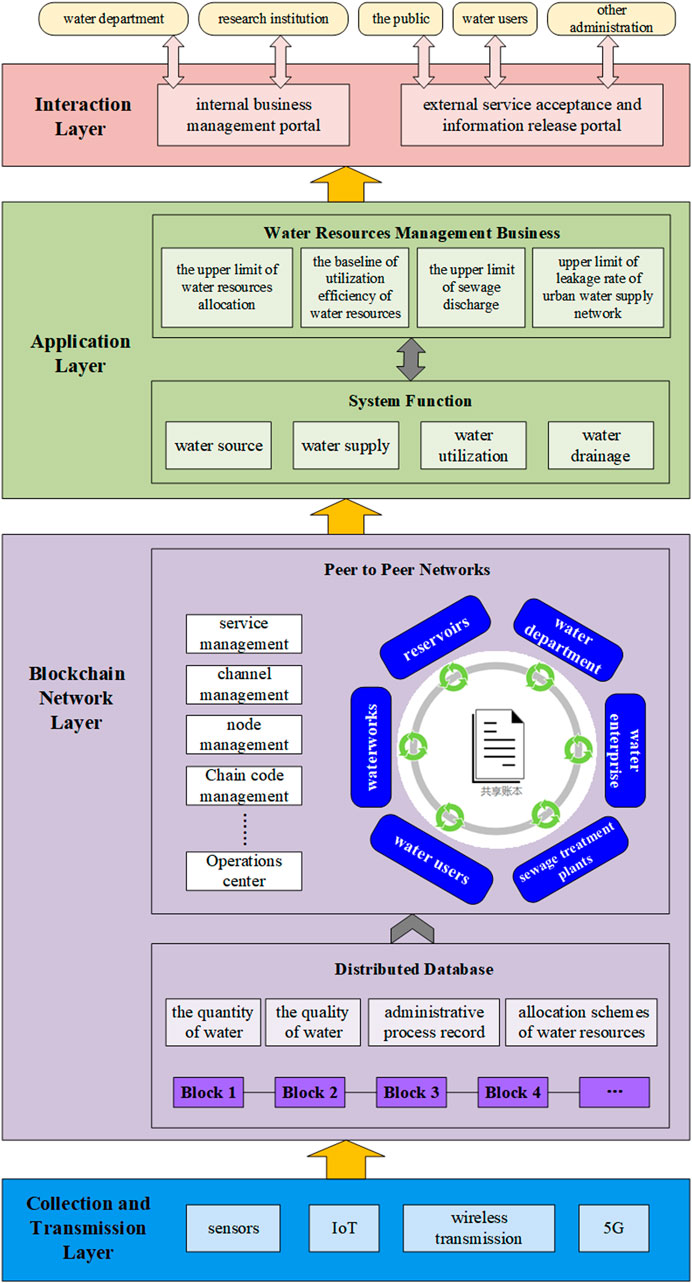Blockchain for Environmental Sustainability: Use Cases and Benefits

- Understanding Blockchain Technology
- The Role of Blockchain in Environmental Sustainability
- Real-world Applications of Blockchain for Environmental Conservation
- Benefits of Using Blockchain for Sustainable Development
- Challenges and Opportunities in Implementing Blockchain for Environmental Sustainability
- Future Outlook: How Blockchain Can Revolutionize Environmental Conservation
Understanding Blockchain Technology
Blockchain technology is a decentralized, distributed ledger system that allows for secure and transparent transactions without the need for intermediaries. This technology is based on a chain of blocks containing transaction data that is cryptographically linked and stored across a network of computers. Each block is connected to the previous one, forming a secure and tamper-proof record of transactions.
One of the key features of blockchain technology is its transparency, as all transactions are recorded on a public ledger that can be accessed by anyone. This transparency helps to build trust among users and ensures the integrity of the data. Additionally, blockchain technology offers security through encryption and consensus mechanisms that make it difficult for malicious actors to alter the data.
Blockchain technology has the potential to revolutionize various industries, including environmental sustainability. By leveraging blockchain technology, organizations can track and verify the origin of products, ensure the authenticity of certifications, and create transparent supply chains. This can help to reduce fraud, improve accountability, and promote sustainability practices.
Furthermore, blockchain technology can enable the creation of smart contracts that automatically execute when certain conditions are met. These smart contracts can be used to automate processes, such as verifying carbon credits or monitoring energy consumption. By streamlining these processes, organizations can reduce costs, increase efficiency, and promote sustainable practices.
In conclusion, blockchain technology has the potential to drive positive change in the field of environmental sustainability. By providing transparency, security, and automation, blockchain technology can help organizations track and verify environmental data, promote sustainable practices, and build trust among stakeholders. As the technology continues to evolve, its impact on environmental sustainability is expected to grow significantly.
The Role of Blockchain in Environmental Sustainability
Blockchain technology plays a crucial role in promoting environmental sustainability by providing transparency, traceability, and accountability in various industries. By leveraging blockchain, organizations can track and verify the origin of products, ensuring they are sourced sustainably and ethically. This helps in reducing the environmental impact of production processes and supply chains.
Moreover, blockchain can facilitate the trading of carbon credits and renewable energy certificates, enabling a more efficient and transparent marketplace for sustainable energy sources. This incentivizes businesses to invest in renewable energy projects and reduce their carbon footprint. Additionally, blockchain can be used to create decentralized systems for managing waste, water, and other resources, optimizing resource allocation and reducing waste generation.
Overall, blockchain technology has the potential to revolutionize the way we approach environmental sustainability by providing innovative solutions to complex challenges. Its decentralized and transparent nature makes it a powerful tool for promoting sustainable practices across various industries. By harnessing the power of blockchain, we can create a more sustainable future for generations to come.
Real-world Applications of Blockchain for Environmental Conservation
Blockchain technology has numerous real-world applications in the realm of environmental conservation. By leveraging the transparency, security, and immutability of blockchain, various initiatives can be implemented to promote sustainability and protect the environment. Some of the key applications of blockchain for environmental conservation include:
- Carbon Credits Tracking: Blockchain can be used to create a transparent and secure system for tracking carbon credits, ensuring that they are not double-counted or fraudulently traded.
- Supply Chain Traceability: Blockchain enables the tracking of products throughout the entire supply chain, allowing consumers to verify the origin and sustainability of the products they purchase.
- Renewable Energy Trading: Blockchain facilitates peer-to-peer trading of renewable energy, enabling individuals to buy and sell excess energy generated from sources such as solar panels.
- Waste Management: Blockchain can be used to track the disposal and recycling of waste materials, ensuring that they are handled in an environmentally responsible manner.
- Biodiversity Conservation: Blockchain can help monitor and protect endangered species by creating a tamper-proof record of conservation efforts and wildlife populations.
Overall, blockchain technology has the potential to revolutionize environmental conservation efforts by providing a secure and transparent platform for implementing sustainable practices. By harnessing the power of blockchain, organizations and individuals can work together to preserve the environment for future generations.
Benefits of Using Blockchain for Sustainable Development
There are numerous benefits of utilizing blockchain technology for sustainable development initiatives. By leveraging blockchain, organizations can enhance transparency, traceability, and accountability in their environmental efforts. This can lead to increased trust among stakeholders and the public, ultimately driving more support for sustainability projects.
Blockchain can also streamline processes and reduce inefficiencies in supply chains, energy trading, carbon credit tracking, and waste management. This increased efficiency can result in cost savings for businesses and governments, making sustainable practices more economically viable.
Furthermore, blockchain can enable the creation of decentralized renewable energy grids, allowing for more efficient energy distribution and utilization. This can help reduce reliance on fossil fuels and lower carbon emissions, contributing to a healthier planet.
Overall, the use of blockchain for sustainable development can revolutionize the way we approach environmental challenges, paving the way for a more sustainable and eco-friendly future.
Challenges and Opportunities in Implementing Blockchain for Environmental Sustainability
Implementing blockchain technology for environmental sustainability presents both challenges and opportunities for organizations looking to make a positive impact on the planet. While blockchain has the potential to revolutionize the way we track and manage environmental data, there are several obstacles that must be overcome to realize its full potential.
One of the main challenges in implementing blockchain for environmental sustainability is the complexity of the technology itself. Blockchain is a decentralized and distributed ledger system that requires a high level of technical expertise to implement and maintain. Organizations may struggle to find the right talent with the necessary skills to develop and manage blockchain solutions for environmental sustainability.
Another challenge is the issue of scalability. As blockchain technology becomes more widely adopted, the network can become congested, leading to slower transaction times and higher fees. This can be a significant barrier for organizations looking to use blockchain for large-scale environmental projects.
Despite these challenges, there are also many opportunities for organizations to leverage blockchain technology for environmental sustainability. One of the main benefits of blockchain is its transparency and immutability, which can help to ensure the integrity of environmental data. By using blockchain, organizations can create a secure and tamper-proof record of environmental information, making it easier to track and verify sustainability efforts.
Blockchain also has the potential to streamline processes and reduce costs associated with environmental monitoring and reporting. By automating data collection and verification through smart contracts, organizations can save time and resources while improving the accuracy of their environmental data.
Future Outlook: How Blockchain Can Revolutionize Environmental Conservation
Looking ahead, the future outlook for environmental conservation using blockchain technology is promising. Blockchain has the potential to revolutionize the way we approach sustainability efforts and address environmental challenges. By leveraging blockchain for environmental conservation, we can create transparent and secure systems that enable better tracking, monitoring, and management of natural resources.
One of the key benefits of blockchain in environmental sustainability is its ability to provide immutable and tamper-proof records of transactions and data. This can help in combating issues such as illegal logging, wildlife trafficking, and pollution by ensuring that information is accurate and trustworthy. Additionally, blockchain can facilitate the creation of smart contracts that automatically execute agreements when certain conditions are met, streamlining processes and reducing the need for intermediaries.
Furthermore, blockchain technology can enable the creation of decentralized marketplaces for trading carbon credits, renewable energy certificates, and other environmental assets. This can incentivize individuals and organizations to reduce their carbon footprint and invest in sustainable practices. By tokenizing environmental assets on the blockchain, we can create new opportunities for funding conservation projects and promoting eco-friendly initiatives.
In conclusion, blockchain has the potential to transform the landscape of environmental conservation by providing innovative solutions to complex challenges. By harnessing the power of blockchain technology, we can work towards a more sustainable future for our planet and ensure the preservation of our natural resources for future generations.



